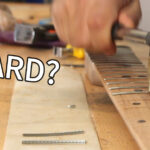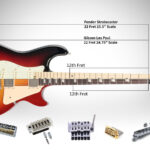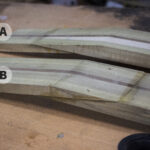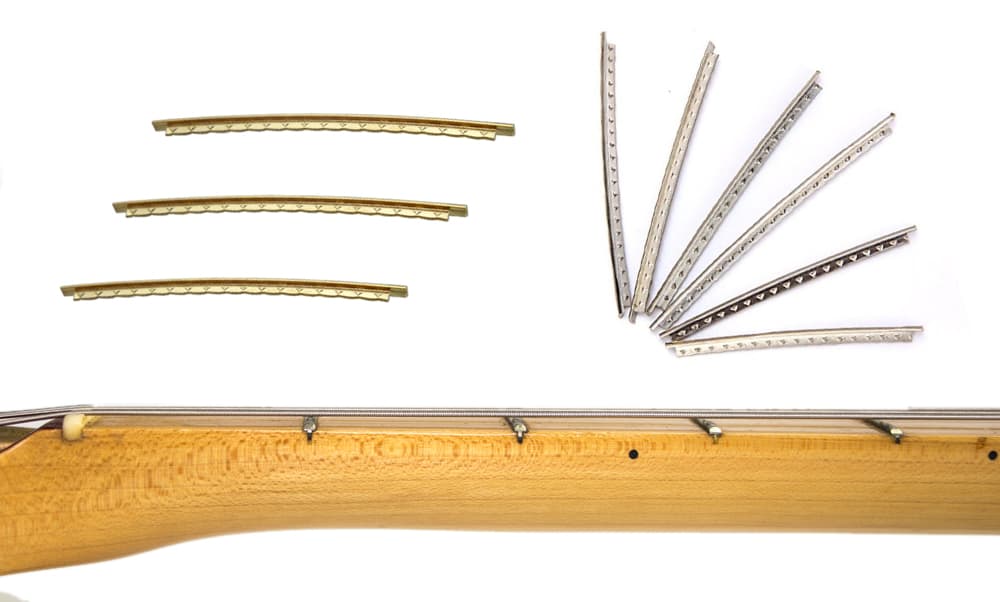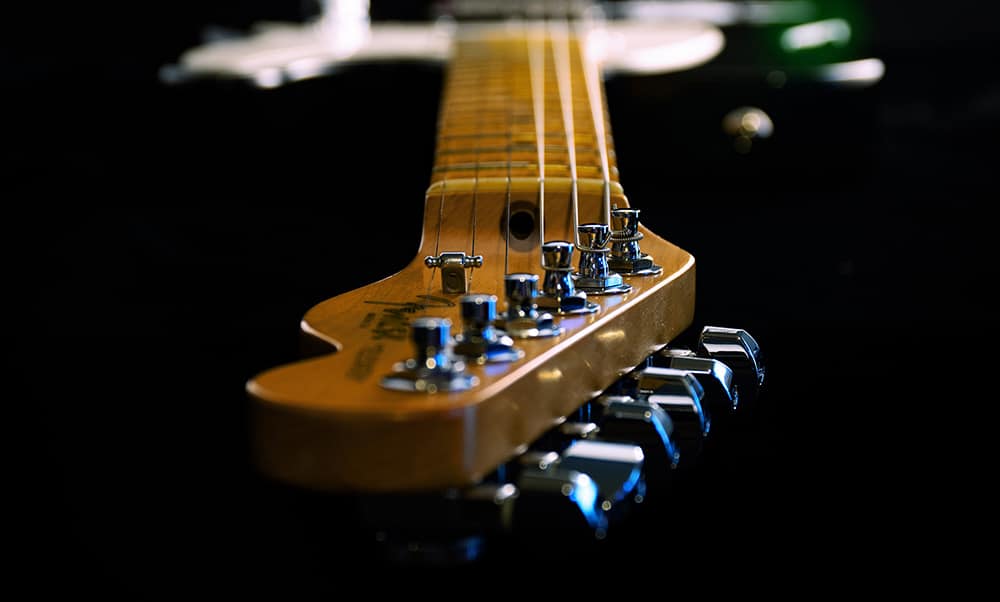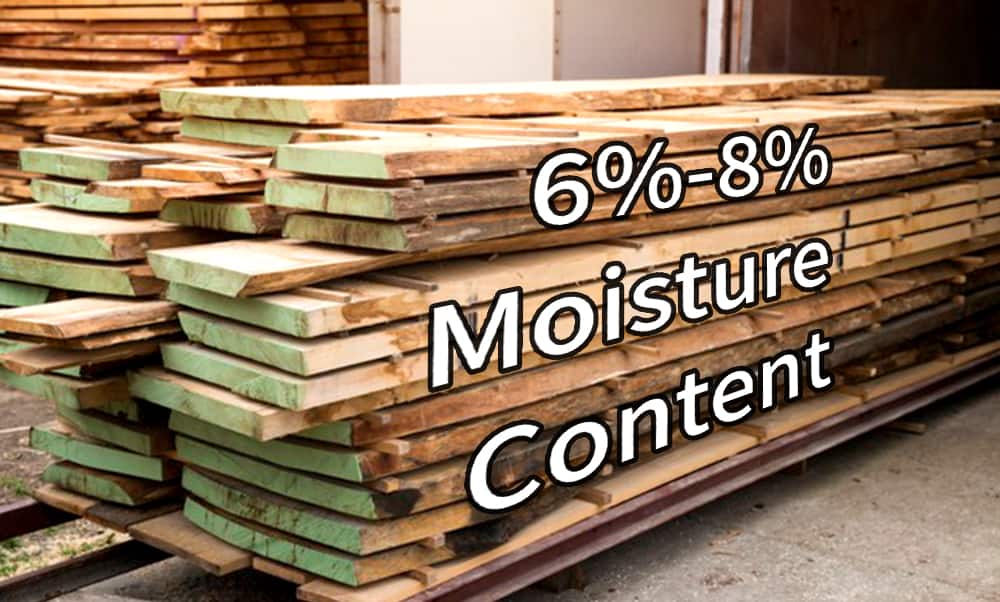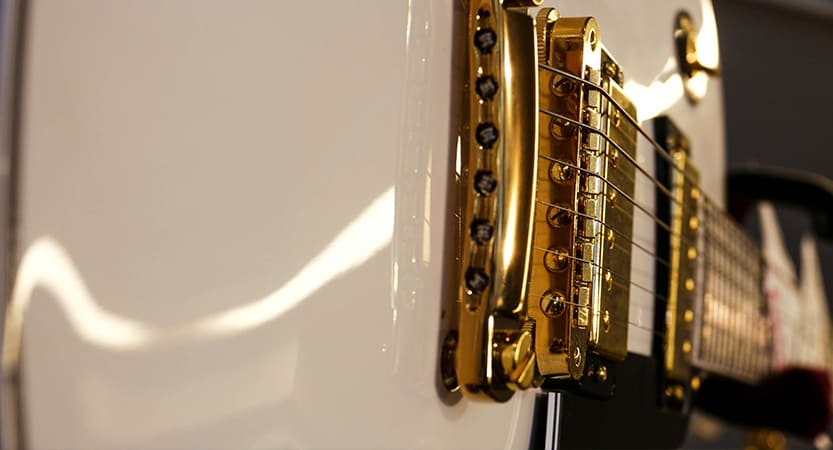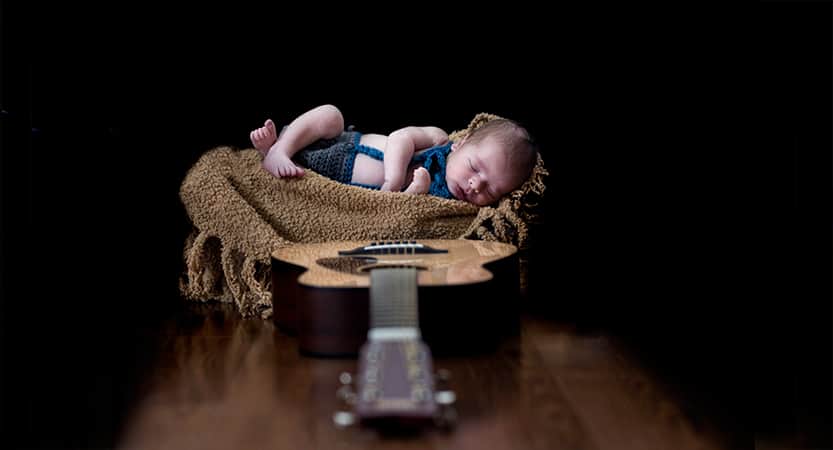For many players frets are just there to do their job and unless they are worn or buzzing, they don’t get and don’t demand too much attention. The average and even many custom guitars will have medium frets which will also do a fine job and sound great. But if you have ever played a guitar that felt just right, fret size may have played a role in that.
So, what’s all the ‘buzz’ about frets? If you are building an electric guitar you should understand a bit more about the subtle nuances that can make a big difference to the character and playability of the guitar. The type and size of frets you use may have a very fine effect on the sound but may have a much bigger influence on the way it feels and the way it is played.
The role of the fret.
The frets are metallic bars which help us change the playable length of each string in order to play different notes on a stringed instrument. Unlike violins and other ‘fretless’ instruments, the frets make playing a little easier in the sense that they come in predefined spaces which will give us half tone increments. In order to get a clear tone, the string needs to be pushed behind the fret with enough pressure to ‘break’ the string at that point.
Let’s try and explore the different characteristics of frets and see what different frets will give us for better or worst.
Fret measurements
To better understand what these numbers mean we have to look at the anatomy of the fret. The two main parts of the fret are the crown, which is the long-rounded part on which the strings are pressed upon when playing, and the Tang which is embedded in the fretboard and holds the fret in place
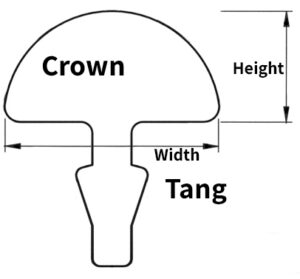
When speaking of fret measurements, we usually refer to the height and the width of the crown. The length would be determined by the width of the fretboard and is not relevant in this discussion.
What is the significance of each measurement?
Fret Height
enables playing without having to actually touch the fretboard and will lend itself to very fast soloing and finger motion. The effect is somewhat similar to scalloped necks where the height is achieved by removing some of the fretboard material between the frets. High frets, also called ‘Jumbo’ Frets have become favored by shredders and rock soloist. The lack of friction from the fretboard will also make bends, ‘pull-offs’ and ‘hammer-ons’ easier to execute.
Players with fast fingers and a light touch will enjoy these types of frets. The reason you need a light touch goes to the only real downside of these frets. Because of the fret height, a heavy hand on the strings will actually pull the string much more than with low frets and may in fact change the pitch of the string just like bending. While bending strings or using a tremolo is all fine when soloing, you probably don’t want every single note coming out of your guitar to be just a bit sharper than you tuned it to be. The higher frets will also be less comfortable for rhythm playing for two reasons. Sliding chords along the fretboard will not feel as smooth as lower frets and act more like speed bumps. Barred chords, which often get uneven pressure on different string may have some of the notes slightly sharp.
Fret Width
Width is often not even mentioned and its effect is probably not as significant as the height. The width in fact effects both the comfort of playing and the longevity of the frets. A wider fret will make sliding along the fingerboard seem smoother and may be preferred by rhythm players. The extra material will also enable more fret adjustments and re-crowning before needing a full re-fret. If you play enough to require re-fretting your guitar completely you may appreciate this ‘feature’. There are also a couple of drawbacks for wider frets. The first is the extra friction you will feel mostly when bending strings. The extra material at the point of contact will be the cause of that. The wider frets will also have a tendency to lose the tip of the crown faster and have it shift from the middle of the crown resulting in out of tune notes, buzzing and the need to retouch the crowning on more frequent occasions.
Combinations
If you are using higher frets there is a good chance you will prefer them to be wide as well. The wider crown may make up for the height and give a smoother overall feeling to the fretboard. If low frets are your preference than you can choose any width.
Some Numbers
Different manufacturers have their own classification to what is small, large, tall, thin or ‘Jumbo’.
The height of crown can start as low as 0.035” or 0.8mm and go up to 0.058” or 1.47
The Width of the crown can start at 0.04” or 1.02mm and up to 0.118” or 2.99mm
Which fret should I use?
As with many other debatable subjects in the guitar world, the decision is not a matter of quality and not even of price. There is definitely no right or wrong here and the preference will be totally personal. Regardless of your, or the person the guitar is intended for, technique and experience, if you tend to press hard on the frets, you will probably want to avoid very high frets. On the other hand, with the same heavy hand you will appreciate wider frets as you also tend to wear the frets out faster.
Fret Material
When we speak about frets, unlike other parts of the guitar, we refer mostly to the sizes and not so much about the quality of the material. The material of the frets can play a role other than the aesthetic one.
Nickel Silver Frets
Most guitars carry ‘Nickel Silver’ frets (sometimes called German Silver) which actually contain no Silver at all. The material is an alloy comprised of Nickel, Copper and Zink. The nickel gives the fret it’s strength and durability and the copper it’s softness and flexibility. Depending on the manufacturer the relative amount of nickel will be around 18 percent, the copper 60-62 per cent and 20 percent Zink. The Silvery color is due to the Nickel.
Brass Frets
If you leave the Nickel out of the equation you will get a more yellowish tint and softer frets. These are a bit softer and will wear out faster than their Nickel alloyed counterparts. Brass frets are more common with old and vintage instruments and a few makers such as Warwick who still proudly use them.
Stainless Steel Frets
Not very common with production guitars but with a growing fan-base amongst custom makers, stainless still are the toughest of the frets. On the upside you may never need a fret-job and if you keep them clean, they could last you a lifetime. The smoothness will also make bends easier. As far as player is concerned this is all good but for the guitar maker it makes dealing with them more difficult and will either require better tools or take a toll on the ones you have. There is also the issue of the sound. Some people say they can hear it giving a brighter sound to the point of chiming or ‘pinging’. Other either cannot hear the difference or don’t mind it so you should really put your own ear to the test and see what you feel or hear about it.
EVO Frets
The Golden EVO frets are another alloy which uses Copper, Iron, Tin and Titanium. It looks very golden, this is not plating, but it contains no actual gold. This unique alloy gives it hardness superior to the Nickel Silver but still less than the Stainless Steel. Other properties such as ease of work, price and longevity will also put it between the two. This would probably be a great substitute for old Brass frets and is generally received well by both Luthiers and players. Since the fretting job itself should cost pretty much the same as Nickel Silver (Unlike Stainless steel for which many Luthiers would rightfully charge extra), the added cost would not be that great and the decision will often boil down to the color. Love it or hate it, it’s Gold.
Other concerns
Tone
Noticing changes of tone between two elements really requires two identical instruments played in the exact same conditions with one parameter changed. Even if you manage that and you can even notice a difference, the qualities are very subjective and illusive.
Sustain
Being a more physical property, the general rule of thumb is that a bigger mass, with greater density will give better sustain. By that rational, Jumbo frets of the wider variety will have improved sustain to the short and thin ones. Will this even be a difference the human ear can notice? Maybe to those guys with absolute hearing. Should this be a major factor when deciding on new frets? I think the difference in playability will play a much bigger role.
Conclusion
Vintage guitars had medium to low frets as they were geared more towards rhythm, but as playing styles have developed so have the choices and size should probably be the chief concern when picking the type and size of you frets should be the style of music you play and how you play it. If you have one guitar, there is a good chance you will look for the all in one compromise, and just like most guitars and most makers pick medium size frets. Just like having multiple guitars for achieving different sounds, you may also want multiple guitars with different fret types for different occasions. ‘Stannard’ frets are a fine choice and don’t necessarily need replacing, but it’s good to know there are options and to understand the differences beyond the hype.

